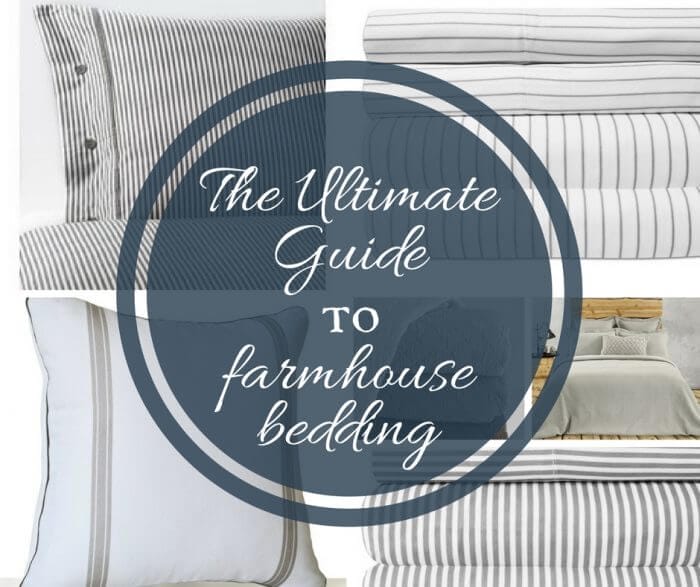Ticking fabric is a tightly-woven textile commonly used for mattress and pillow covers. It has a striped or patterned design and is typically made from cotton or a cotton blend.
Ticking fabric is known for its durability, breathability, and resistance to wear and tear. It is also often treated to be fire-resistant and waterproof, making it a popular choice for bedding and upholstery in the hospitality industry. In addition to its functional qualities, ticking fabric can also add a touch of vintage charm to home decor and is favored by those seeking a classic, timeless look.
Whether used in traditional or modern settings, ticking fabric offers both style and practicality.
Table of Contents
The History Of Ticking Fabric
When it comes to durable and versatile fabrics, ticking fabric has long been a popular choice. But have you ever wondered about its origins and how it has evolved over time? In this article, we’ll take a closer look at the fascinating history of ticking fabric, from its early beginnings to its modern-day uses.
Origins
The origins of ticking fabric can be traced back to the 18th century. Originally, it was used to make tightly woven mattress covers, primarily in Europe and the United States. Ticking fabric was prized for its sturdiness and ability to withstand wear and tear.
To create ticking fabric, cotton or linen fibers were tightly woven together, resulting in a strong and durable material. Its distinctive pattern, often featuring stripes or checks, added a touch of visual interest.
Evolution Over Time
Over time, ticking fabric began to find its way into various other applications. Its durability and resistance to abrasion made it ideal for use in upholstery, particularly in high-traffic areas. Furniture makers and interior designers recognized the value of ticking fabric in creating long-lasting and visually appealing pieces.
Additionally, ticking fabric evolved to meet changing consumer needs. It underwent advancements in design and production techniques, resulting in a wider range of patterns, colors, and textures to choose from. Today, ticking fabric can be found in various styles, ranging from traditional to modern, allowing for endless design possibilities.
Furthermore, ticking fabric’s popularity has extended beyond the realm of home decor. Its durability and versatility have made it a popular choice in the fashion industry as well. From clothing to accessories, designers have embraced ticking fabric for its timeless appeal and rugged charm.
In conclusion, the history of ticking fabric is a journey that takes us from its humble beginnings as a mattress cover to its widespread use in upholstery and fashion. Its ability to withstand the test of time and adapt to changing trends has cemented ticking fabric as a beloved and enduring textile choice for many.

Credit: www.cleanuniforms.com
Characteristics And Features
Ticking fabric is known for its durable and tightly woven material that is often used for making pillows, cushions, and mattresses. With its characteristic striped pattern and sturdy construction, ticking fabric offers both style and functionality for various home decor projects.
Material Composition
Ticking fabric is composed of durable and strong materials such as cotton, linen, or a blend of both.
Texture And Weave
Ticking fabric is known for its tight and dense weave, creating a smooth and sturdy texture.
Applications In Home Furnishings
Bedding
Ticking fabric is commonly used in bedding due to its durability and resistance to wear and tear.
Upholstery
For upholstery applications, ticking fabric provides a classic look that complements various furniture styles.
Curtains
Ticking fabric works well for curtains, offering a timeless aesthetic and excellent light-blocking properties.
Quality Assessment
When it comes to choosing ticking fabric for your upholstery or bedding, quality is paramount. Without proper quality assessment, you might end up with a fabric that wears out quickly or fades in color, leaving you disappointed and in need of replacements. Therefore, it is crucial to understand the key aspects of quality that determine the durability, colorfastness, and overall performance of ticking fabric.
Durability:
Durability is a crucial factor to consider when selecting ticking fabric. After all, you want a fabric that can withstand daily wear, tear, and frequent use, without losing its appearance and structural integrity.
The durability of ticking fabric depends on several factors:
- Fiber Strength: The strength of the fibers used in the fabric construction plays a vital role in determining its durability. Fabrics made from strong and resilient fibers, such as high-quality cotton or polyester, tend to last longer.
- Thread Density: The tightness of the weave or thread density also contributes to the fabric’s durability. Fabrics with a higher thread count are generally more durable and resistant to tearing.
- Weave Type: Different types of weaves, such as plain weave or twill weave, have varying levels of strength and durability. For example, twill weaves are known for their strength and ability to resist snags and pulls.
Colorfastness:
Colorfastness is an important consideration when selecting ticking fabric, especially if you want your upholstery or bedding to maintain its vibrant color over time. Nobody wants a fabric that fades quickly or loses its original hue after a few washes or exposure to sunlight.
Factors that contribute to the colorfastness of ticking fabric include:
- Dye Quality: High-quality ticking fabric is dyed using colorants that are resistant to fading. The use of fade-resistant dyes ensures that the fabric retains its color even after repeated washing or exposure to UV rays.
- UV Protection: Some ticking fabrics are treated with UV-resistant coatings to protect against color fading caused by sunlight exposure. These specialized treatments help the fabric maintain its vibrant appearance for a longer period.
Thread Count:
Thread count is an essential metric for assessing the quality of ticking fabric. It refers to the number of threads per square inch of fabric and is an indicator of the fabric’s density and durability.
A higher thread count generally suggests a denser, more durable fabric that can withstand repeated use. However, it’s important to note that thread count alone doesn’t determine the quality of ticking fabric. Other aspects, such as fiber strength and weave type, also contribute to its overall durability and performance.
In conclusion, when it comes to ticking fabric, quality assessment is crucial. Consider factors like durability, colorfastness, and thread count to ensure you choose a fabric that not only looks great but also stands the test of time.
Maintaining And Cleaning Ticking Fabric
Ticking fabric is a durable and tightly woven cotton or linen fabric commonly used in upholstery, mattresses, and pillows. Its tight weave prevents feathers or other filling materials from poking through and provides a smooth, comfortable surface for seating and sleep. While ticking fabric is known for its resiliency, it still requires proper maintenance and cleaning to ensure its longevity and performance.
Cleaning Techniques
When it comes to cleaning ticking fabric, it’s essential to apply gentle methods to avoid damaging the fabric. Here are some effective cleaning techniques:
- Spot Cleaning: Carefully blot the affected area with a damp cloth and a mild detergent to lift the stain without spreading it.
- Vacuuming: Regularly vacuum your ticking fabric to remove dust, dirt, and debris buildup, using a soft brush attachment to avoid damaging the fabric.
- Dry Cleaning: For stubborn stains or extensive cleaning, consider professional dry cleaning to safely treat the fabric and maintain its integrity.
Preservation Tips
Proper preservation techniques can significantly extend the lifespan of your ticking fabric. Here are some preservation tips:
- Rotate Cushions: Regularly rotate and flip cushions to distribute wear and prevent uneven fading or damage.
- Shield from Direct Sunlight: Minimize prolonged exposure to direct sunlight to prevent fading and weakening of the fabric fibers.
- Use Fabric Protector: Consider applying a fabric protector to repel spills and stains, keeping the fabric looking fresh and clean for longer.

Credit: www.twelveonmain.com
Ticking Fabric In Fashion
The relevance of ticking fabric in the world of fashion cannot be overstated. Its timeless appeal and versatile nature have made it a staple in the world of textiles, consistently gracing the runways and wardrobes of fashion enthusiasts. Let’s delve into the historical usage and modern trends of this remarkable fabric.
Historical Usage
In the historical context, ticking fabric has long been associated with utilitarian use, initially utilized for its durability and strength. Its tightly woven structure made it ideal for heavy-duty items such as mattresses and pillows. Dating back to the 18th century, this humble fabric was commonly used for these functional purposes, characterized by its distinctive vertical stripes. The practicality and sturdiness of ticking fabric became synonymous with reliability, gradually gaining recognition in the realm of fashion.
Modern Trends
In the contemporary fashion landscape, ticking fabric has transcended its utilitarian origins to emerge as a fashion statement in its own right. Recognized for its aesthetic appeal and rustic charm, designers have harnessed the versatility of ticking fabric to create an array of stylish garments and accessories. Its classic striped pattern has been incorporated into a range of clothing items, from casual tops to chic dresses, adding a touch of vintage flair to modern ensembles. The adaptability of ticking fabric has made it a frontrunner in the sustainable fashion movement, as its durable nature aligns with the ethos of longevity and durability in clothing.
Environmental Impact
Ticking fabric is a durable, tightly woven material usually made from cotton or a blend of synthetic and natural fibers. Due to its sturdy nature, it can be used for various applications such as mattresses, pillows, and upholstered furniture. This type of fabric is favored for its resistance to wear and tear, making it an environmentally friendly choice for long-lasting products.
Environmental Impact Sustainability Ticking fabric has a substantial environmental impact due to the materials used and the manufacturing processes involved. The sustainability of ticking fabric varies depending on the sourcing of materials and production methods. Some ticking fabrics are made from sustainable materials, such as organic cotton or recycled fibers, which can reduce the environmental footprint. Eco-friendly Alternatives Eco-friendly alternatives to conventional ticking fabric include organic cotton, recycled polyester, and hemp. These materials are more sustainable and environmentally friendly, helping to reduce waste and pollution. Choosing eco-friendly alternatives can have a positive impact on the environment by supporting sustainable practices in the textile industry. In terms of sustainability, ticking fabric can have a significant environmental impact. Eco-friendly alternatives, such as organic cotton and recycled fibers, offer more sustainable options for conscious consumers.
Credit: www.midwestlifeandstyle.com
Frequently Asked Questions Of What Is Ticking Fabric
Why Is Fabric Called Ticking?
Fabric is called ticking because it refers to the sound the fabric makes when it’s woven. This term originated from the ticking noise made by the loom’s motion.
What Is The Difference Between Ticking And Canvas?
Ticking is a tightly woven fabric used for mattress covers and pillows, while canvas is a heavy-duty material used for tents and sails. Ticking is softer and less durable, while canvas is sturdier and more resistant to wear and tear.
What Does Ticking Fabric Look Like?
Ticking fabric is a durable, closely woven cotton or linen material with distinctive vertical stripes.
Is Ticking Fabric Good For Upholstery?
Yes, ticking fabric is good for upholstery as it is durable, versatile, and has a classic look. It is often used for furniture due to its strength and resistance to wear and tear.
Conclusion
To sum up, ticking fabric is a versatile and durable textile that has been used for centuries in various applications. Its tightly woven construction and strong fibers make it an ideal choice for upholstery, bedding, and other home furnishings. The twill or herringbone pattern adds visual interest to any space, while the inherent sturdiness ensures longevity.
With its history rooted in practicality and its timeless appeal, ticking fabric continues to be a popular choice for those seeking a classic yet functional fabric option. So, whether you’re looking to revamp your home or add a touch of sophistication, consider incorporating ticking fabric into your interior design.
